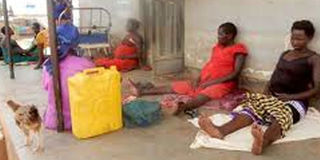State of our healthcare requires better planning

Two related stories about maternal healthcare in Kabarole and Bunyangabu once again brings to focus the long-standing concern about Uganda’s health service delivery.
It also raises questions about our commitment as a country to providing pregnant women improved access to healthcare, including wide coverage and quality services since many women in this country do not have health insurance.
The story that the future of expectant mothers in Bunyangabu District hangs in the balance after the exit of a non-governmental organisation that has been supporting them, is an example of how low health coverage can have adverse effects on a community – more so a vulnerable group like expectant mothers.
In 2012, the NGO – Baylor Uganda – introduced a programme in the three western districts of Kabarole, Kyenjojo and Kamwenge dubbed “saving mothers, giving life”. It was aimed at improving maternal health.
Following the end of the six-year programme, other districts retained the NGO’s staff except Bunyangabu, which was carved out of Kabarole District in 2017. The district could not retain the staff due to budget constraints.
Such programmes are certainly godsend, more so in communities where both access and quality of healthcare remain wanting. The initiative included the renovation of some health facilities and equipping them. Health workers were also recruited.
Kabarole District is currently facing a similar predicament where the regional referral hospital is overwhelmed by the numbers of pregnant women. The hospital, which has only one maternity ward to handle all expectant mothers referred from lower health centres, has now been forced to discharge mothers a few hours after delivery to create space for others.
While there may be no danger in discharging mothers who have delivered normally a few hours after delivery – if health workers deem it safe - what happens in cases where the mothers need to stay longer in hospital for monitoring as a result of unique health needs or complications? How does the hospital handle a scenario where the labour ward is full yet there are other women in labour?
This scenario is not unique to the mentioned districts. It happens in many health facilities in Uganda and the experiences of pregnant women in government health units are similar across the country.
Therefore, when NGOs introduce initiatives that improve and equip health facilities aimed at improving maternal care, we should not stop at celebrating such programmes. The local governments should take over such facilities and maintain them to continue serving communities.




